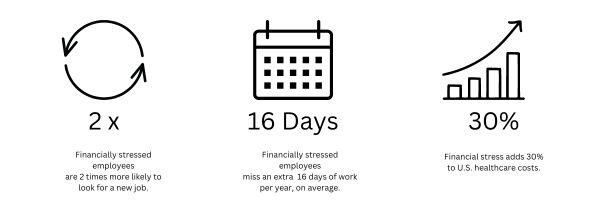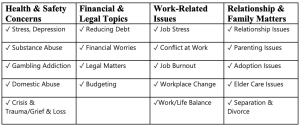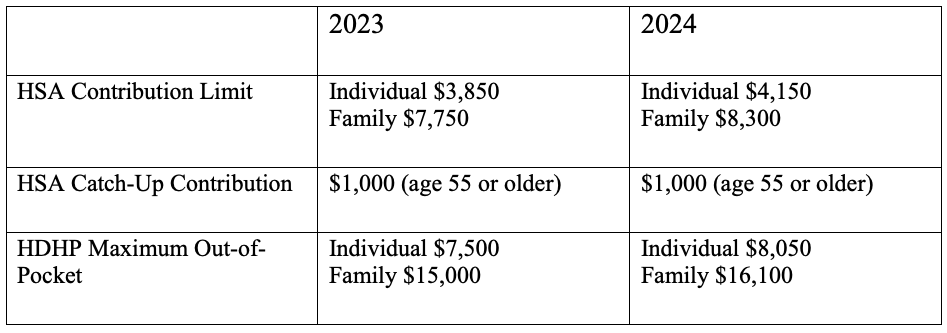
by admin | Aug 1, 2023 | Employee Benefits, Hot Topics
- Fertility Treatments Coverage: Fertility treatments, such as in vitro fertilization (IVF) or intrauterine insemination (IUI), can be expensive and may not be covered by traditional health insurance plans. Fertility treatment coverage can help employees overcome financial barriers and access the fertility treatments they need to start or expand their families.
- Egg Freezing: Egg freezing allows individuals to preserve their eggs for future use. This can be particularly beneficial for employees who want to delay starting a family due to personal or professional reasons.
- Fertility Preservation: Some medical treatments, such as chemotherapy or radiation therapy, can have a negative impact on fertility. Fertility preservation options, such as freezing embryos or sperm freezing, can help individuals protect their fertility before undergoing such treatments.
- Adoption Assistance: In addition to fertility treatments, companies are expanding their benefits to include adoption assistance programs. These programs can provide financial support, counseling services, and resources to employees who are going through the adoption process. By offering adoption assistance, employers show their commitment to supporting various pathways to parenthood and promoting inclusivity.
- Fertility Education and Support: Many employers are going beyond financial coverage and offering educational resources and support for employees navigating fertility challenges. This can include access to fertility experts, educational seminars, counseling services, and fertility wellness programs.
Since fertility coverage is relatively new, fertility benefits can vary greatly. However, essentially there are two options for coverage:
- Cover specific treatments under their health plan
- Offer to pay a portion of treatment costs as a voluntary benefit
Employee expectations around benefits and workplace support have evolved in step with the growing desire for fertility and family-forming benefits. By offering emerging fertility benefits, employers demonstrate their commitment to supporting employees’ family-building journeys and recognizing the diverse needs of their workforce. These benefits can enhance employee satisfaction, improve work-life balance, and contribute to a more supportive workplace culture.
 Did you know that in 2017 the American Medical Association and the World Health Organization recognized infertility as a disease? Approximately 17.5% – roughly one in six couples– are affected by infertility in the U.S.
As societal norms and employee expectations continue to evolve, companies are recognizing the importance of offering comprehensive benefits packages that cater to the needs of their workforce. One area that has gained attention in recent years is fertility benefits. Here’s an overview of emerging fertility benefits and their significance:
Did you know that in 2017 the American Medical Association and the World Health Organization recognized infertility as a disease? Approximately 17.5% – roughly one in six couples– are affected by infertility in the U.S.
As societal norms and employee expectations continue to evolve, companies are recognizing the importance of offering comprehensive benefits packages that cater to the needs of their workforce. One area that has gained attention in recent years is fertility benefits. Here’s an overview of emerging fertility benefits and their significance:
- Fertility Treatments Coverage: Fertility treatments, such as in vitro fertilization (IVF) or intrauterine insemination (IUI), can be expensive and may not be covered by traditional health insurance plans. Fertility treatment coverage can help employees overcome financial barriers and access the fertility treatments they need to start or expand their families.
- Egg Freezing: Egg freezing allows individuals to preserve their eggs for future use. This can be particularly beneficial for employees who want to delay starting a family due to personal or professional reasons.
- Fertility Preservation: Some medical treatments, such as chemotherapy or radiation therapy, can have a negative impact on fertility. Fertility preservation options, such as freezing embryos or sperm freezing, can help individuals protect their fertility before undergoing such treatments.
- Adoption Assistance: In addition to fertility treatments, companies are expanding their benefits to include adoption assistance programs. These programs can provide financial support, counseling services, and resources to employees who are going through the adoption process. By offering adoption assistance, employers show their commitment to supporting various pathways to parenthood and promoting inclusivity.
- Fertility Education and Support: Many employers are going beyond financial coverage and offering educational resources and support for employees navigating fertility challenges. This can include access to fertility experts, educational seminars, counseling services, and fertility wellness programs.
Since fertility coverage is relatively new, fertility benefits can vary greatly. However, essentially there are two options for coverage:
- Cover specific treatments under their health plan
- Offer to pay a portion of treatment costs as a voluntary benefit
Employee expectations around benefits and workplace support have evolved in step with the growing desire for fertility and family-forming benefits. By offering emerging fertility benefits, employers demonstrate their commitment to supporting employees’ family-building journeys and recognizing the diverse needs of their workforce. These benefits can enhance employee satisfaction, improve work-life balance, and contribute to a more supportive workplace culture.

by admin | Jul 18, 2023 | Employee Benefits
 In the wake of the Great Depression and WWII, employers started to add benefits packages. Healthcare had fallen by the wayside for families working to access the basic necessities of life. The idea was to support the employee’s personal needs while keeping and attracting the best talents in the workforce. This trend of offering benefits has continued into the 21st century. In the present era, most employees that join the workforce are Millennials (born between 1981-1996) and Generation Z (born between 1997-2012). Over half of them have said they want help building a more secure financial future. Over half of them have said they want help building a more secure financial future.
In the wake of the Great Depression and WWII, employers started to add benefits packages. Healthcare had fallen by the wayside for families working to access the basic necessities of life. The idea was to support the employee’s personal needs while keeping and attracting the best talents in the workforce. This trend of offering benefits has continued into the 21st century. In the present era, most employees that join the workforce are Millennials (born between 1981-1996) and Generation Z (born between 1997-2012). Over half of them have said they want help building a more secure financial future. Over half of them have said they want help building a more secure financial future.
Employee benefits play a crucial role in providing financial safety nets for employees. When employees experience less financial stress, employers see better employee productivity and fewer work absences. To aid with financial guidance and resources, many employers are offering financial wellness benefits beyond typical retirement plans. Here are some common financial safety nets that may be included in employee benefit packages:
- Retirement Plans: Employer-sponsored retirement plans, such as 401(k) or pension plans, enable employees to save for their post-employment years. These plans typically offer contributions from both the employer and employee, providing a safety net for financial stability during retirement.
- Disability Insurance: Disability insurance provides income replacement if an employee becomes unable to work due to a disability. It helps protect against loss of income during an extended period of absence from work. More disabilities are caused by illness rather than injury – including common conditions like heart disease, back pain or arthritis.
- Life Insurance: Life insurance offers financial protection to employees’ beneficiaries in the event of their death. It provides a lump sum payment or regular income to dependents, helping them cope with financial obligations.
- Paid Time Off (PTO): Paid leave policies, such as vacation days, sick leave, and personal days, offer employees the flexibility to take time off while still receiving their regular pay. This benefit supports employees during times of illness, personal emergencies, or the need for work-life balance.
- Flexible Spending Accounts (FSAs) or Health Savings Accounts (HSAs): FSAs and HSAs allow employees to set aside pre-tax dollars for qualified healthcare expenses or dependent care expenses. These accounts reduce the financial burden of medical or childcare costs.
- Tuition Reimbursement or Assistance Programs: Realizing student loans burden many employees, a growing number of employers are willing to offer help. Employers may also offer educational assistance programs to help employees pursue further education or skill development.
- Financial Education and Counseling: Employers may provide financial education programs and counseling services to help employees manage their finances effectively. Financial planning provides access to financial advisors who can help employees develop an overall financial plan including retirement savings and investing. Financial coaching helps employees manage their personal finances, such as budgeting and managing credit.
- Employee Assistance Programs (EAP): EAPs offer confidential counseling, mental health support, and resources to employees and their families. These programs help employees address personal and work-related challenges and promote overall well-being.

It’s important to note that the specific benefits offered by employers can vary widely. When it comes to benefits, employers know the cost of providing the best options pays off with better talent and more productive workers. Ultimately, having some financial safety nets in place for employees helps workers achieve their financial goals and save more of their hard-earned money for both expected and unexpected expenses.

by admin | Jun 12, 2023 | Employee Benefits
 As much as employers might prefer that employees’ personal affairs do not interfere with their work, the reality is that problems outside of the workplace can and do impact job performance. Many of these issues go unaddressed due to fear of stigmatization, leading to further declines in employee health and productivity. Anxiety and stress, financial troubles, substance abuse and other personal problems can also lead to increased absenteeism. To help combat these issues, many employers offer a workplace benefit called an Employee Assistance Program (EAP) that is designed to help employees address everyday challenges.
As much as employers might prefer that employees’ personal affairs do not interfere with their work, the reality is that problems outside of the workplace can and do impact job performance. Many of these issues go unaddressed due to fear of stigmatization, leading to further declines in employee health and productivity. Anxiety and stress, financial troubles, substance abuse and other personal problems can also lead to increased absenteeism. To help combat these issues, many employers offer a workplace benefit called an Employee Assistance Program (EAP) that is designed to help employees address everyday challenges.
What is an EAP?
An EAP provides voluntary, confidential services to employees who need help managing personal difficulties or life challenges. The idea is to address personal issues before they interfere with work performance. The employee assistance program is one of the top benefits employers offer in America—for a good reason. They are one way that companies support the well-being of their employees. An EAP generally offers confidential assessment, short-term counseling, referrals and follow-up services for employees.
Typically, an EAP grants employees access to a set number of sessions with a therapist, and the employee would not accrue any co-pay, deductible, or other out-of-pocket costs for the service. For example, Nick has been struggling with depression. To sooth his anxiety, he has begun drinking every day. It’s gradually escalated to the point where he is late to work, has frequent absences, and is missing deadlines. He knows he needs to talk with someone who can offer him alcohol abuse resources. He accesses his company-sponsored EAP.
Meredith is a full-time, married employee with two small children and is also caring for her aging mother who suffers from Alzheimer’s. She is constantly stressed due to the heavy burden of her daily life. The schedule has left her exhausted and she misses work each month due to feeling burnt out. She reaches out to her EAP counselor for time management and mental health tips.
Here are some other common services included in EAPs:

One reason behind the popularity of EAPs is that it’s a mutually beneficial program for employers and employees. After all, your employees are the foundation of your company. Healthy and happy employees are more productive and engaged in their jobs which is great for your company’s bottom line!

by admin | Jun 5, 2023 | Employee Benefits, Human Resources
 Total rewards packages refer to the compensation and benefits plans that companies offer. This phrase, however, extends beyond mere salary or wages and traditional benefits, like health insurance, to provide both recruits and employees with a rundown of what makes the employer special. Some in Human Resources might regard the total rewards package as the starting line for employee value proposition (EVP).
Total rewards packages refer to the compensation and benefits plans that companies offer. This phrase, however, extends beyond mere salary or wages and traditional benefits, like health insurance, to provide both recruits and employees with a rundown of what makes the employer special. Some in Human Resources might regard the total rewards package as the starting line for employee value proposition (EVP).
Here are the different components of a total rewards package:
Compensation
Compensation, which may refer to wages or salary, is the obvious main feature of the total rewards package. People get paid for their work, so they can afford housing, food, and the basic necessities of life. The money you’re paid to work may include the chance for bonuses and other merit-based rewards, in addition to salary or wages.
Basic Benefits
The most well-known benefits include health, vision, and dental insurance. People have come to expect some form of medical insurance for full-time employment in the United States. In fact, most rely on this benefit for their healthcare because private insurance is astronomically expensive without group membership, and the United States does not have a public option.
Retirement Plans
Offering 401(k) or IRA plans have also become the norm. Companies previously rewarded loyalty with pensions that could help people survive after employment ended. However, nowadays, pensions have been replaced by these other retirement plans, which rely on sometimes volatile markets. There are penalties for taking the money out of such accounts before retirement.
Paid Time Off (PTO)
Paid time off is not a given in every job. However, it refers to the time people are allowed to take vacation, recover from illness or injury, and celebrate holidays while still getting paid. This can include vacation days, sick days, and bank holidays.
Nowadays, some companies are getting creative with PTO. They may include shared days off, where the entire organization takes a break and gets paid. Or they might have unlimited PTO, which means people do not have to accrue or earn days based on seniority. Rather, they can take off when they need to without limit. In those cases, however, employers use an honor system to ensure people do not take advantage of the system.
Family Leave
This is key for new parents, those tending to loved ones who are ill or elderly, or those facing a longer-term illness themselves because they can take time off for care. However, family leave does not have to be paid. Approved family leave requires employers to hold the position for the person, but they do not have to be paid during that time off. It depends on whether they company offers pay for family leave. Many do pay for maternity leave for up to three months, and many others are offering paternity leave now, too. Assessing employment law is a necessity in these cases. And job applicants must do their due diligence when vetting potential employers if they think they may need leave at some point.
Learning and Development and Career Paths
Employees are seeking opportunities to learn, grow, and develop in their careers while on the job. Therefore, more employers are trying to offer training, classes, reimbursement for tuition or coursework, mentorship, leadership development, and other opportunities to gain skills necessary for raises and promotions. It will also help the individual and the employer remain relevant as the skills gap becomes more of a problem in the future of work.
Mental Health and Wellness Programs
For decades now, people have looked to their employers for gyms or gym membership. But now everyone is thinking beyond physical health to mental health as well. As a result, access to mental health help, employee assistance programs (EAPs), classes on mindfulness or yoga, apps for stress management, and more are on the table. Many employers are responding with a wealth of benefits related to wellness and well-being.
Free Food
Providing free lunches, snacks, or special occasion treats has been a hallmark of American companies. Many of the tech giants have campuses that provide services from dry cleaning to dental work, and free food in the cafeteria is a given. As employers try to convince people to return to the office in this post-pandemic era, they try to lure them with bagels or pizza or even other more gourmet options.
Work-Life Balance
Flexibility in where and/or when people work is going mainstream. As the gig economy gains steam, people expect to have more flexibility in their scheduling. Offering remote or hybrid work schedules, understanding when someone must pick up their kid from school or go to a doctor’s appointment, and allowing people to execute asynchronous work during off hours are benefits that impact work-life balance.
Ultimately, the total rewards package a company offers is the first sign of its relationship with employees. It tells the story of how talent is valued by an organization. It usually requires more than just money to satisfy recruits and employees.
By Francesca Di Meglio
Originally posted on HR Exchange Network

by admin | May 30, 2023 | Employee Benefits, HSA/HRA
 Are you the type of person who loves to save money? You’ll be happy to know that there’s a way to do so with your health care costs. It starts with medical expense accounts which let you set aside money to pay for certain health products and services. One type of medical expense account is a Health Savings Account (HSA).
Are you the type of person who loves to save money? You’ll be happy to know that there’s a way to do so with your health care costs. It starts with medical expense accounts which let you set aside money to pay for certain health products and services. One type of medical expense account is a Health Savings Account (HSA).
How Does An HSA Work?
An HSA is a type of personal savings account you can use to pay certain health care costs. An HSA lets you pay for qualified health, dental and vision care costs for yourself, spouse and dependents with tax-free money. The money you contribute comes out of your paycheck – before taxes – and that is how you save to pay for your out-of-pocket health care expenses. Like a regular savings account, your HSA has an interest rate that allows your money to grow while sitting in the account. Your employer also has the option of contributing to your HSA, helping it to grow faster.
If you don’t use all of your HSA funds during the calendar year, you can roll that money over. An HSA is owned by you so you take it with you no matter if you change plans, change jobs or if you decide to retire. You will get a debit card which is linked to your HSA when you set up your account that you use to pay for eligible expenses.
You must be enrolled in a High Deductible Health Plan (HDHP) to open and contribute to an HSA. HDHPs medical plans aim to minimize your health care costs if you don’t use your plan a lot but keep you financially protected in cases of illness or emergency. Similar to a car insurance policy, you pay for your expenses up to the point that you meet your deductible and then the insurance coverage begins. The higher the deductible you choose, the smaller the monthly cost will be. But it also means that when you have health expenses, you are responsible for all of the costs up to your deductible amount. Rather than pay for your health expenses that occur before hitting your deductible out of your pocket, you can pay for those expenses using pre-tax dollars from your HSA account.
Federal law includes strict guidelines for HSAs including HDHP cost sharing and annual limits on contributions. The amount you contribute can be adjusted throughout the year but they do have an annual limit on how much you can contribute per year. This limit is set by the IRS and usually increases each year. Contribution limits for 2023 and 2024 are:

What Are the Benefits of Having an HSA?
- Money goes in tax-free – Your HSA contributions are made on a pre-tax basis and are also tax deductible
- Money comes out tax-free – Eligible healthcare purchases can be made directly from the HSA account
- Earn interest, tax-free – The interest on HSA funds grows on a tax-free basis. Unlike most savings accounts, interest earned on an HSA is not considered taxable income when funds are used for eligible medical expenses.
- Your HSA balance can be invested – Depending on your HSA, you may be eligible to invest your HSA similar to a 401k or IRA – in an interest-bearing account, mutual fund, stocks or bonds.
- Your HSA balance can be carried over – Unlike a Flexible Spending Account (FSA), an HSA is not a use-it-or-lose-it account. You can carry over your balance year after year.
- You can use your HSA to add to your retirement funds – After the age of 65, you can withdraw funds from your HSA for any reason without penalty.
The Bottom Line
HSAs are often referred to as triple tax-advantaged and are one of the best savings and investment tools available under the U.S. tax code. As a person ages, medical expenses tend to increase, particularly when reaching retirement age and beyond. Therefore, starting an HSA early and allowing it to accumulate over a long period, can contribute greatly to securing your financial future.

by admin | Apr 18, 2023 | Employee Benefits
 A Lifestyle Spending Account (LSA) offers employers an opportunity to help fund health and wellness costs that a traditional group health plan won’t cover. LSAs are often used as perks to attract and retain quality employees and could be a desirable piece of the employee benefits puzzle.
A Lifestyle Spending Account (LSA) offers employers an opportunity to help fund health and wellness costs that a traditional group health plan won’t cover. LSAs are often used as perks to attract and retain quality employees and could be a desirable piece of the employee benefits puzzle.
What Is a Lifestyle Spending Account?
A Lifestyle Spending Account (also called Personal Spending Accounts or Wellness Spending Accounts) is a relatively new employee perk that is designed to encourage spending on wellness activities. Many employers already offer Health Savings Accounts (HSAs) or Flexible Spending Accounts (FSAs) to help employees save and cover health-related costs but an LSA opens an entirely different type of spending.
In short, LSAs are flexible after-tax funds to support life’s everyday needs. Lifestyle Spending Accounts allow employers to build an account to fund employees’ everyday needs without the burden of managing additional reimbursements. Each employee is unique and a LSA gives the choice to use after-tax funds on expenses that aren’t covered by traditional benefits. With an LSA, employers create the program parameters by defining how much employees will receive and what the funds can be used for. Typically, these benefits support the physical, mental, emotional and financial health of employees.
As employees demand customized benefits packages and more employers offer LSAs, it’s important for employers to understand the specifics of this spending account and consider if they are a good fit for their organization and employees.
What Are Some Examples of LSAs?
- Financial Services (Financial Education, Student Loan Repayment)
- Care Services (Child and Adult Care, Adoption and IVF Services, Pet Care)
- Physical Health (Gym Memberships and Fitness Equipment)
- Work from Home Expenses (Office Supplies and Office Equipment)
- Professional Development (Continuing Education Courses and Conferences)
- Mental Health Services (Counseling Services, Virtual Therapy)
- Wellness (Nutrition Counseling)
How Does a LSA Work?
Employers are the decision-makers when determining what expenses are eligible for reimbursement through a Lifestyle Spending Account. It’s another potential perk that employers can offer to improve their relationship with employees. Additionally, the emphasis on health and wellness can help the employer foster a healthy workplace culture.
Let’s say that you have a lifestyle spending account with $1,000 in it for the year. You spend $500 on a gym membership. When you are reimbursed by your employer for the $500, you’ll have to report that as income at tax time. Although you pay income taxes on the funds spent, it’s a way for employers to prioritize your wellness. You’ll only have to pay taxes on your Lifestyle Spending Account if you actually spend the funds.
While many benefits, like health insurance, are seen as reactive perks for when problems arise, LSAs encourage a more proactive approach. By implementing a LSA, you can encourage your employees to focus on all aspects of wellness by giving them the financial means to build healthy habits and offset costs they’ll face along the way.
Remember, LSAs are entirely employer-funded so it does add to the budget. If you do decide to offer LSAs, it is important to educate your employees on these additional benefits available to them to increase employee utilization. Employers are uniquely positioned to help employees understand the importance of LSAs and how to best spend and boost their overall well-being.
We are, after all, living in the age of personalization. Everything in our lives, from our Netflix subscriptions to our Spotify playlists is customized to us and our preferences. Likewise, lifestyle benefits can be designed in a way that addressed the various needs of your diverse workforce. For example, a working parent can use their monthly allowance on childcare or work from home expenses while a Gen Z employee can use their allowance for paying down student loans or pet care. LSAs offer the choice and personalization that your diverse, multi-generational workforce needs and wants.

 Did you know that in 2017 the American Medical Association and the World Health Organization recognized infertility as a disease? Approximately 17.5% – roughly one in six couples– are affected by infertility in the U.S.
As societal norms and employee expectations continue to evolve, companies are recognizing the importance of offering comprehensive benefits packages that cater to the needs of their workforce. One area that has gained attention in recent years is fertility benefits. Here’s an overview of emerging fertility benefits and their significance:
Did you know that in 2017 the American Medical Association and the World Health Organization recognized infertility as a disease? Approximately 17.5% – roughly one in six couples– are affected by infertility in the U.S.
As societal norms and employee expectations continue to evolve, companies are recognizing the importance of offering comprehensive benefits packages that cater to the needs of their workforce. One area that has gained attention in recent years is fertility benefits. Here’s an overview of emerging fertility benefits and their significance:








